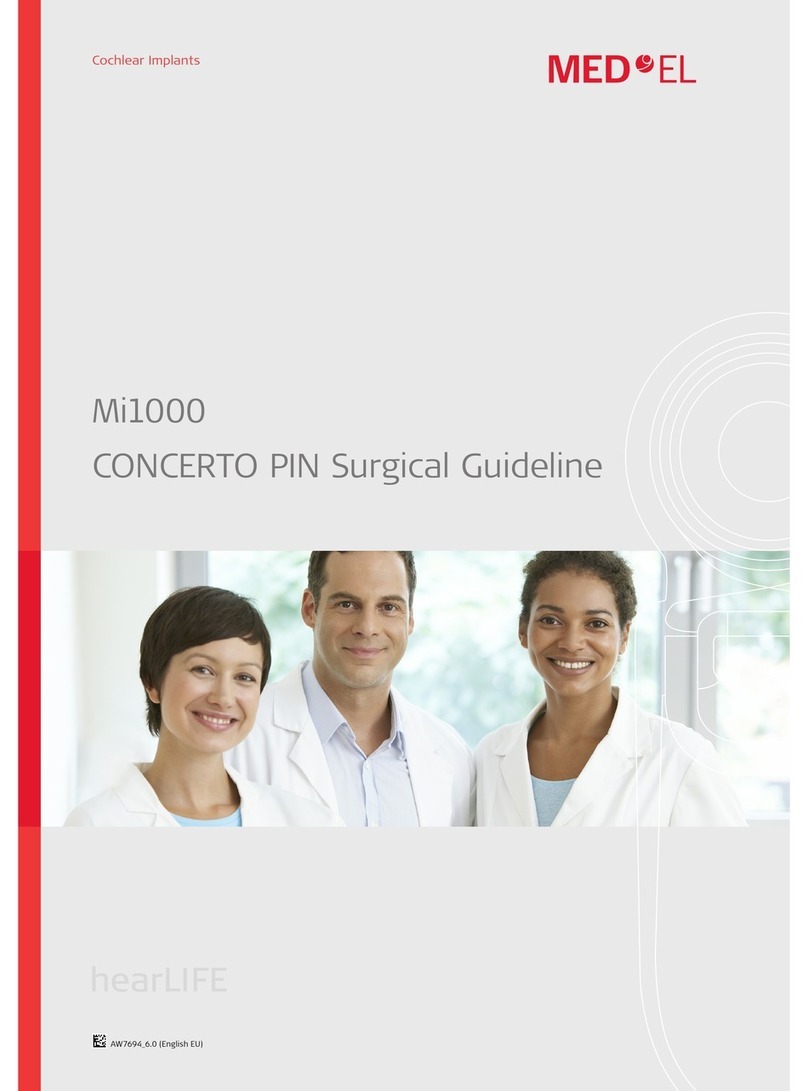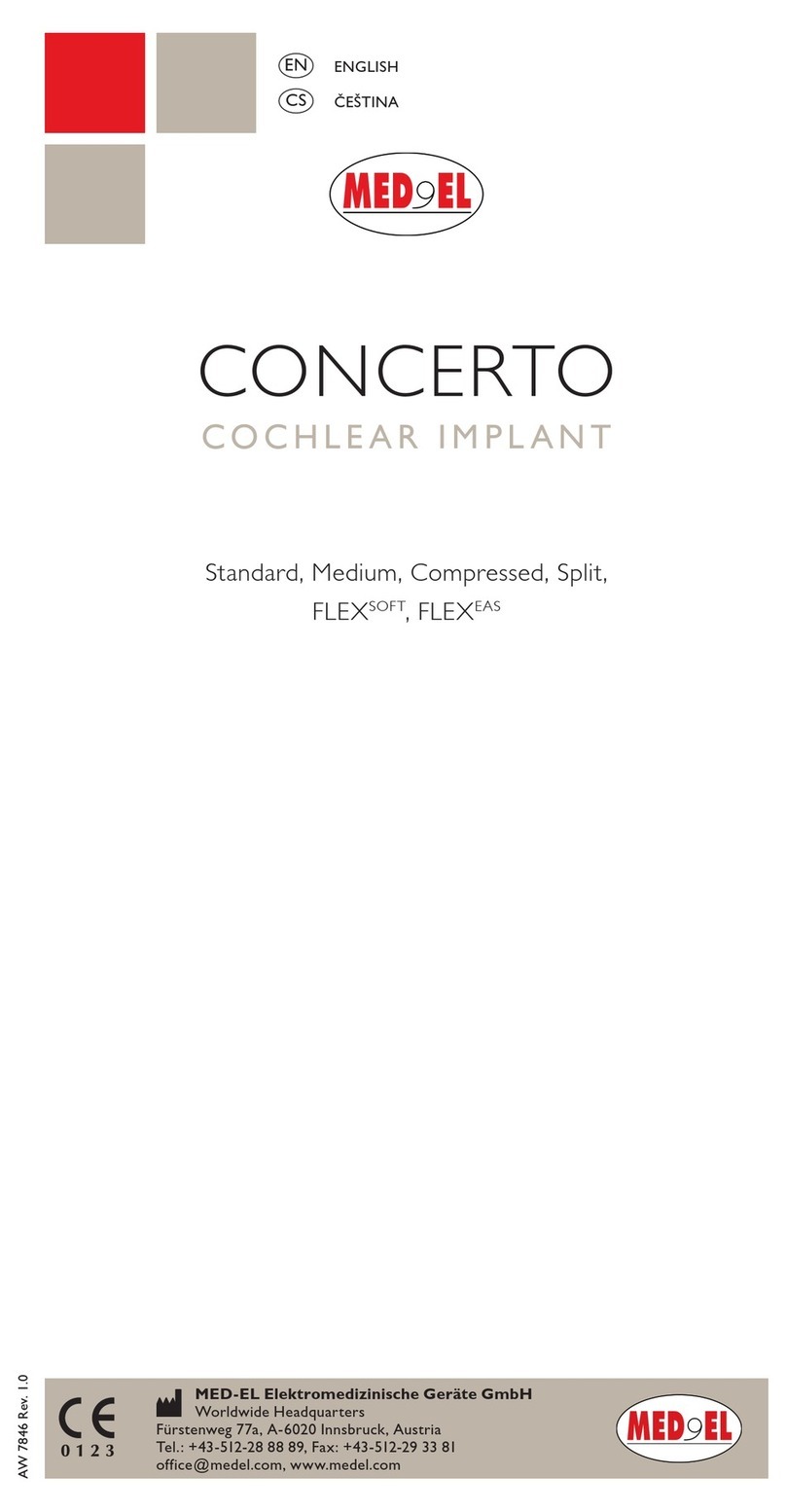:: 5
About difficult listening environments
Background noise makes hearing more difficult for everyone – and especially for
people with hearing impairment. An optimal signal to noise ratio is required for good
listening conditions. The signal (e.g. speech) should be somewhat louder than the
background noise (e.g. traffic, people talking, etc.) to be considered easy to listen to.
There are three factors that degrade the quality of a speech signal received by the
microphone of the speech processor: noise, reverberation and distance.
Noise such as the radio or television playing in the background, scraping of chairs,
street sounds, people talking, rustling paper, air conditioners, fans and other
sounds all affect our ability to hear and understand speech. To improve hearing
in such conditions, it is important to ensure that speech is presented at a
louder level than any competing background noise. For most normal hearing
individuals, the signal should be 6 dB louder than the noise, while for hearing
impaired individuals it should be 15 to 18 dB louder. The average classroom
has a signal to noise ratio of 0 dB.
Reverberation or echo is a prolongation of sound - due to multiple reflections from
hard surfaces - that affects the clearness of speech. The degree of
reverberation (measured as the time required for a sound to drop 60 dB from
its initial level) is dependent on the characteristics of a room: hard walls, high
ceilings, tiled floors and glass windows all contribute to a more reverberant
room. Thus, problems with listening occur more frequently in classrooms, the
bathroom, kitchen, the laundry room or the cellar. For effective listening,
hearing impaired people need rooms to have a reverberation of no more than
0.3-0.4 seconds – the average classroom reverberation level is twice as high.
Distance is the range in which speech can be heard. With hearing loss, this range is
reduced, so the listener needs to be closer to the speaker to hear speech well.
The best distance for hearing speech is 1-2 m (3-6 ft.). Doubling this distance
reduces the signal to noise ratio by 6 dB.
What can be done to improve hearing in difficult listening conditions?
FM systems work by placing the speech signal right at the listener’s ear, thus
reducing the effects of background noise, echo and distance. First, FM systems cut
down noise by amplifying the speaker’s voice. They also reduce the effects of
distance by bringing the speaker’s voice directly to the listener’s ear. Finally, FM
systems dampen echo by making the speech signal clearer. By using radio waves, FM
systems allow the strength and quality of sounds to remain constant over the
operational distance.
FM systems also reduce the effort required for communication. By improving the
signal to noise ratio, reducing distance and echo, they reduce listening fatigue. The
communication process is also easier for the speaker, as he or she can move around
freely and talk at normal levels - no loudspeakers or other devices are required.
An effective solution for the
poor acoustic environments
in classrooms is the use of
FM systems. FM systems
use frequency-modulated
(FM) radio waves to
transmit the speech signal
from the teacher directly to
the student’s speech
processor.












































